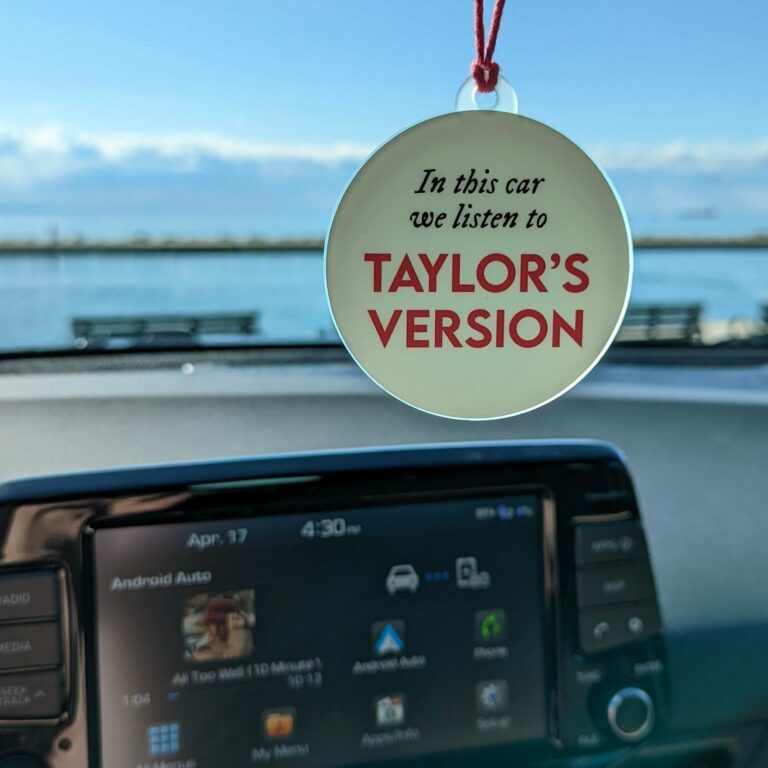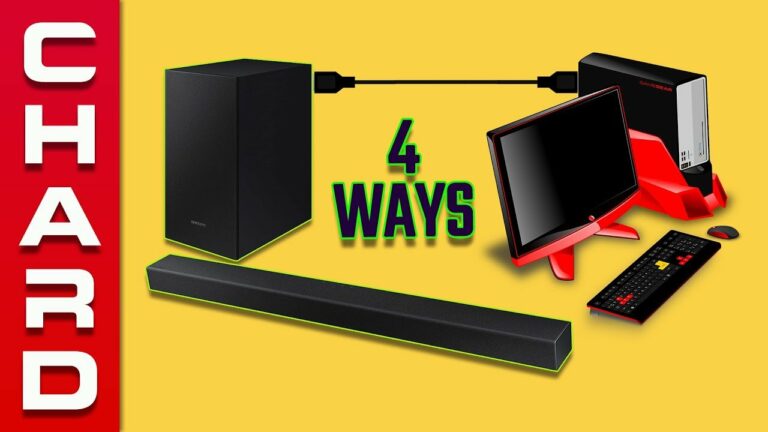Best Way to Face Subs in a Hatchback
Do you find yourself struggling to maximize your space while facing subs in a hatchback? Well, we’ve got the solution for you. The best way to face subs in a hatchback is by utilizing strategic positioning and proper installation techniques. By doing so, you’ll not only enhance the overall audio experience but also create a more comfortable environment for everyone in the car. So, let’s dive right in and explore how you can optimize your hatchback for the ultimate subwoofer performance.
Best Way to Face Subs in a Hatchback
When it comes to car audio, having a hatchback can present some unique challenges. Limited space, acoustics, and positioning of your subwoofers can greatly impact the overall sound quality and bass performance in your vehicle. In this article, we will explore the best ways to face subs in a hatchback, maximizing your audio experience and ensuring that you get the most out of your subwoofers.
1. Understanding the Importance of Subwoofer Placement
To achieve the best sound quality and bass response in your hatchback, it is crucial to consider the placement of your subwoofers. Proper subwoofer placement can significantly impact the overall audio experience, providing a balanced and deep bass performance. Here are a few key factors to keep in mind:
Utilize the Cargo Area
The cargo area of a hatchback is one of the most suitable locations for installing subwoofers. This area provides enough space to accommodate the subwoofer enclosure and allows for optimal sound dispersion. Placing the subwoofers in the cargo area ensures that the bass is evenly distributed throughout the vehicle.
Avoid Blocking the Rear Window
While utilizing the cargo area is ideal, it is essential to avoid blocking the rear window with the subwoofer enclosure. Blocking the rear window not only obstructs your visibility but can also negatively impact the acoustics inside the vehicle. To prevent this, consider installing the subwoofers to the side or corner of the cargo area, allowing for an unobstructed view while maintaining optimal sound quality.
Experiment with Different Positions
Every hatchback is unique, and the acoustics can vary depending on the size, shape, and interior design of the vehicle. It is advisable to experiment with different subwoofer positions to find the optimal placement for your specific hatchback. Try positioning the subwoofers in different corners of the cargo area, under the seats, or even in the spare tire well. By experimenting, you can find the position that provides the best bass response and overall sound quality.
2. Facing the Subwoofers Towards the Rear
One of the best ways to face subs in a hatchback is by directing them towards the rear of the vehicle. This configuration allows the bass waves to bounce off the rear wall, creating a more immersive and impactful sound experience. Here’s why this approach is effective:
Benefits of Rear-Facing Subwoofers
– Enhanced Bass Response: When subwoofers are facing towards the rear, the bass waves bounce off the rear wall and blend with the direct sound, resulting in a more impactful and deep bass response.
– Reduced Cancellation: Facing the subs towards the rear minimizes the potential cancellation that can occur when the bass waves directly interact with the front wave. This ensures that the bass remains consistent and smooth throughout the vehicle.
– Optimized Sound Imaging: Rear-facing subwoofers can create a more immersive soundstage by enhancing the stereo imaging and providing a sense of depth and dimension to the audio playback.
Considerations for Rear-Facing Subwoofers
While facing the subwoofers towards the rear has its advantages, it is important to consider a few factors before implementing this configuration:
– Cargo Space: Rear-facing subwoofers may occupy a significant portion of the cargo area, limiting the available space for other items. Plan your cargo space accordingly and ensure that you still have sufficient storage capacity.
– Enclosure Design: The design of the subwoofer enclosure plays a crucial role in the performance of rear-facing subwoofers. Opt for a well-designed enclosure that complements the orientation and positioning of the subs for optimal sound quality.
3. Utilizing Angled Subwoofer Enclosures
Another effective way to face subs in a hatchback is by utilizing angled subwoofer enclosures. Angled enclosures are specifically designed to direct the sound waves towards the desired direction, optimizing the bass response and overall audio experience. Here’s why angled subwoofer enclosures can be beneficial:
Directing Bass Waves
Angled subwoofer enclosures are designed to redirect the bass waves towards the desired direction, such as the rear of the vehicle, maximizing the impact and providing a more even bass distribution. This design ensures that the sound waves are projected effectively, enhancing the overall sound quality.
Space Optimization
Hatchbacks often have limited space, and angled subwoofer enclosures can help optimize the use of available space. By angling the subs, you can position them in corners or against the sides of the cargo area, making efficient use of the available dimensions without compromising on sound quality.
Custom Enclosures
To further enhance the bass performance and maximize the potential of angled subwoofer enclosures, consider investing in custom enclosures. Custom enclosures are designed to fit seamlessly into your hatchback, taking into account the available space and interior dimensions. This ensures a precise fit and optimal sound quality.
4. Sealing the Subwoofer Enclosure
Properly sealing the subwoofer enclosure is critical for achieving accurate and impactful bass response. A well-sealed enclosure prevents air leaks and ensures that the subwoofers perform optimally. Here’s why sealing the enclosure is essential:
Controlling Air Leakage
Air leakage within the subwoofer enclosure can negatively impact the performance and efficiency of the subs. Sealing the enclosure prevents any unwanted air leaks, allowing the subwoofers to generate the desired bass response without wasted energy.
Improved Sound Accuracy
A sealed enclosure provides better control over the movement of the subwoofer cone, resulting in tighter and more accurate bass reproduction. This ensures that the bass frequencies are reproduced with precision, enhancing the overall sound quality.
Enclosure Types for Sealed Applications
There are different types of subwoofer enclosures suitable for sealed applications. Some common ones include:
– Sealed Box: This enclosure type offers precise control over the subwoofer’s movement and delivers a well-defined, tight bass response.
– Infinite Baffle: Also known as free-air or open-air enclosures, these enclosures utilize the trunk or cargo area as the enclosure itself, requiring careful consideration of the vehicle’s acoustics for optimal performance.
5. Considering Additional Sound Dampening
In a hatchback, where the cargo area is directly connected to the passenger cabin, additional sound dampening can significantly improve the overall audio experience. Here are a few options to consider:
Sound Deadening Materials
Using sound deadening materials, such as mass-loaded vinyl (MLV) or butyl-based damping mats, can reduce vibrations, rattling, and road noise. Applying these materials to the doors, rear panels, and trunk area helps create a more acoustically controlled environment, enhancing the bass response and overall audio quality.
Carpeting and Padding
Carpeting the trunk area and adding padding can further minimize vibrations and improve sound insulation. This helps in reducing any unwanted resonance or distortion caused by the hatchback’s structure, resulting in a cleaner and more refined bass reproduction.
Acoustic Treatments
Consider investing in acoustic treatments, such as foam panels or bass traps, to minimize reflections and standing waves inside the vehicle. These treatments help in creating a more balanced and controlled audio environment, improving the overall sound quality.
In conclusion, optimizing your hatchback’s audio system for the best possible subwoofer performance involves careful consideration of subwoofer placement, orientation, enclosure design, and additional sound dampening. By following the guidelines provided in this article, you can achieve a powerful and immersive bass experience that enhances your overall driving enjoyment. Experiment with different configurations, and don’t hesitate to seek professional assistance if needed, to unlock the full potential of your hatchback’s sound system.
WHICH WAY SHOULD I FACE MY SUBWOOFER? DOES IT REALLY MATTER?
Frequently Asked Questions
What is the best way to position subwoofers in a hatchback?
The ideal placement for subs in a hatchback is typically in the trunk or cargo area. This allows for proper sound dispersion and prevents unwanted vibrations. Placing the subs against the rear seat or in the corners of the trunk can help maximize bass response. Experimenting with different positions and angles can help achieve the best sound quality.
Should I install a subwoofer enclosure in my hatchback?
Yes, installing a subwoofer enclosure is highly recommended. An enclosure helps to create a sealed or ported space around the subwoofers, which enhances their performance and prevents sound waves from canceling each other out. There are different types of enclosures available, such as sealed, ported, or bandpass, so it’s important to choose one that suits your audio preferences.
How can I ensure proper power supply for my subwoofers in a hatchback?
To ensure a proper power supply for your subwoofers, you should use a dedicated amplifier that matches the power requirements of your subs. It’s also crucial to have a reliable and adequate power source, such as a strong battery and suitable wiring, to avoid any voltage drops or power issues. Additionally, investing in a capacitor can help stabilize the power flow and prevent any potential damage to your vehicle’s electrical system.
What is the recommended subwoofer size for a hatchback?
The recommended subwoofer size for a hatchback depends on personal preferences, available space, and the desired level of bass. Generally, 10-inch or 12-inch subwoofers are popular choices for hatchbacks as they offer a good balance between bass reproduction and space utilization. However, larger sizes can also be used if the vehicle’s trunk or cargo area allows for it.
How can I minimize rattling and vibrations when installing subs in a hatchback?
To minimize rattling and vibrations when installing subs in a hatchback, adequate sound damping is essential. Using products like sound deadening mats or foam can help reduce unwanted noise caused by vibrations. Additionally, securing the subwoofers and any loose panels or objects in the trunk area can also minimize rattling. Taking the time to properly install and secure the subs and related components will result in a cleaner and more enjoyable audio experience.
Final Thoughts
The best way to face subs in a hatchback is by carefully selecting the right storage options and audio setup. By choosing compact subs and utilizing custom enclosures, you can maximize space without compromising on sound quality. It is important to ensure proper installation and positioning to optimize bass response. Additionally, utilizing sound deadening materials and fine-tuning the audio system can further enhance the listening experience. Taking these steps will allow you to enjoy powerful bass while still making the most of the limited space in a hatchback.





